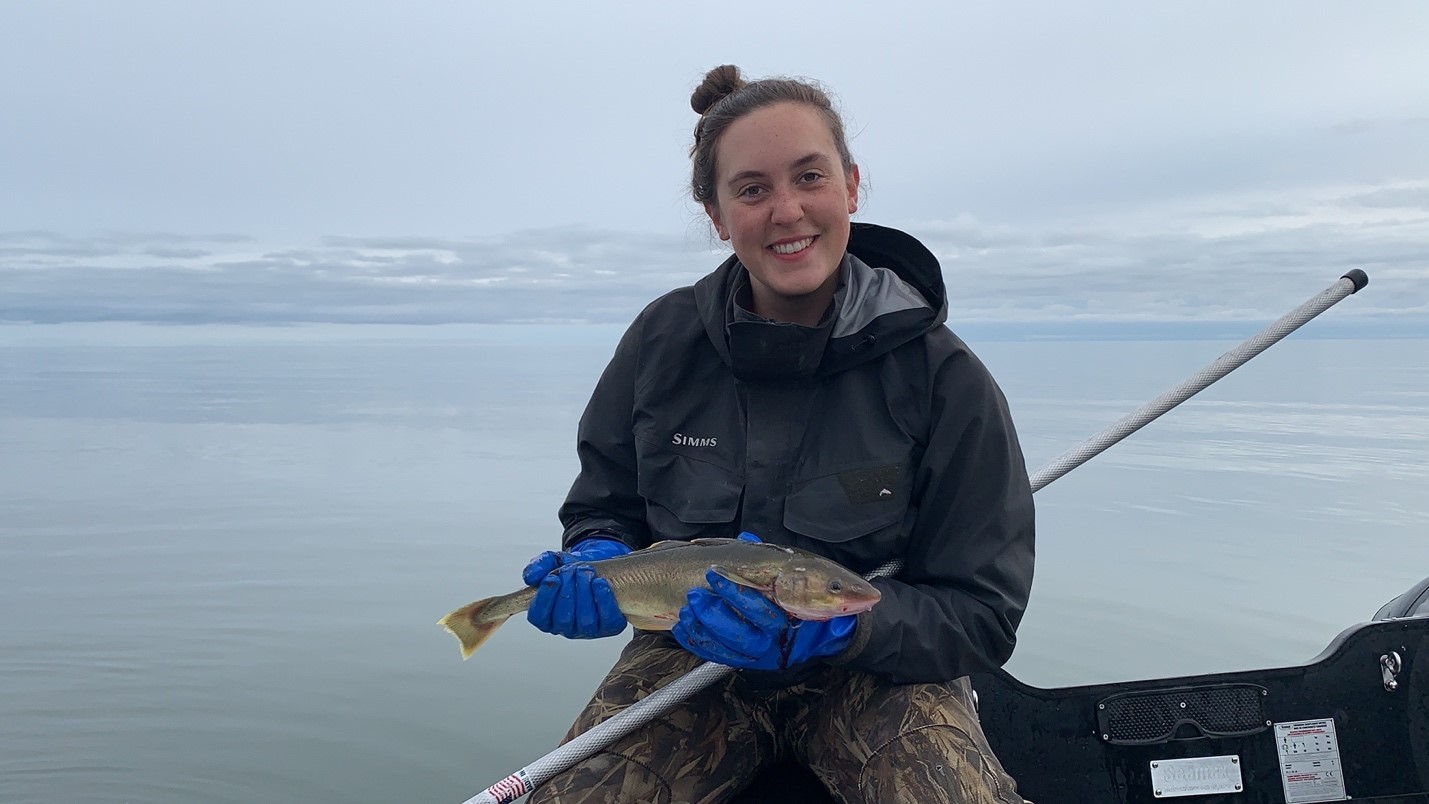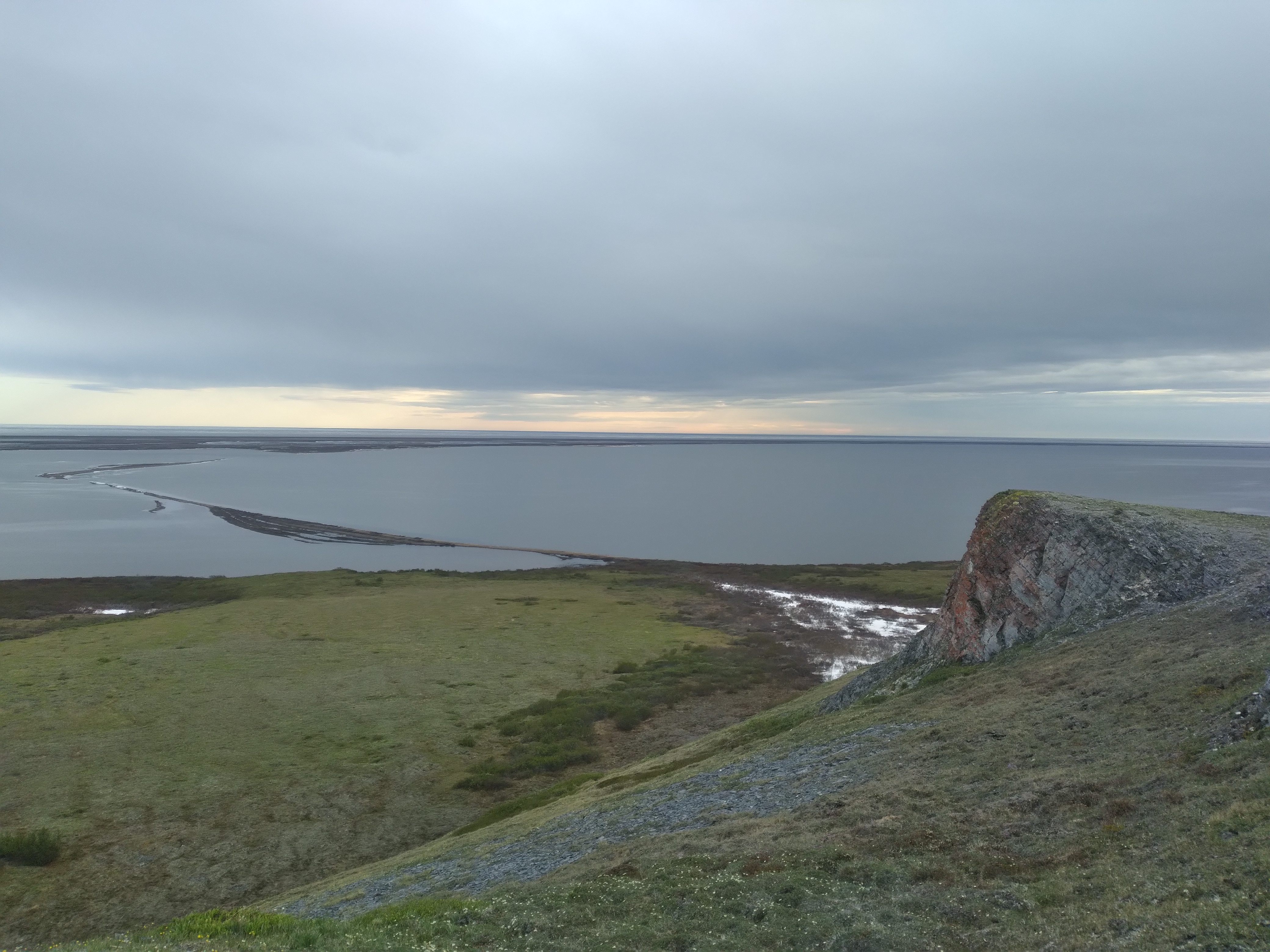Study: ‘Forever chemicals’ barely present in Arctic Alaska fish
Jeff Richardson
907-474-5350
Sept. 7, 2023

UAF CFOS graduate Carolyn Hamman displays a saffron cod captured in fyke nets during fieldwork for the Beaufort Sea Nearshore Long-Term Fisheries Monitoring Program at Prudhoe Bay.
A new study has found minute levels of chemical contamination in a small sample of Arctic coastal fish species, an encouraging finding for residents who rely on them for subsistence foods.
The study looked for the presence of PFAS, short for per- and polyfluoroalkyl substances, a broad category of harmful synthetic chemicals that don’t naturally degrade. That characteristic has earned them the nickname “forever chemicals” as they persist and accumulate in the environment, contaminating sites across Alaska and throughout the world.
“Once these substances get into the water, they’re pretty much impossible to get out, and they can accumulate in the tissues of fish and wildlife,” said Kevin Fraley, a fisheries ecologist with the Wildlife Conservation Society and lead author of the study. “In Alaska, we eat so many wild foods that it’s a pretty big deal to see how much of it is out there.”
The study analyzed muscle tissue from fish species of importance to subsistence fishing. They were collected during separate long-term research projects by the University of Alaska Fairbanks and the Wildlife Conservation Society. The samples, gathered near Kotzebue and Prudhoe Bay, were tested for 24 PFAS compounds as well as total mercury levels.
Alaska doesn’t have health guidelines for PFAS contamination in fish. Other states have advised various actions at contamination levels starting from 9 to 47 micrograms per kilogram. All the fish species tested from the Chukchi Sea and Beaufort Sea samples were far below those levels.
Dolly Varden in both locations were almost free of the chemicals, with just trace amounts of a single contaminant found in a Beaufort sample. The highest levels detected were in Beaufort Sea broad whitefish, which had 2.8 mcg/kg of a type of PFAS. Other tested species included Arctic flounder, saffron cod, inconnu (also known as sheefish), humpback whitefish and least cisco.
Those levels are a significant contrast to some Arctic sites in Canada and Europe, where fish samples have had PFAS levels of more than 30 micrograms per kilogram at some locations.

Krusenstern Lagoon lies along the Chukchi Sea coast in Cape Krusenstern National Monument. Fish were sampled from this and other nearby lagoons for PFAS and mercury testing.
Mercury levels were also low in the Alaska samples, with every species testing well below the thresholds set in the state of Alaska’s fish consumption guidelines for sensitive groups, which includes children and pregnant women.
“Given the importance of subsistence fisheries resources in Alaska, it is great to see that the fish examined as part of this study had minimal contaminant levels,” said Trent Sutton, a fisheries biologist at the UAF College of Fisheries and Ocean Sciences and the lead investigator of the Beaufort Sea Long-Term Nearshore Fish Monitoring Program.
Along with Sutton, contributors to the study included Carolyn Hamman, who graduated from UAF this year with a master’s degree in fisheries. For this project, Hamman led sampling efforts for fish collections in Prudhoe Bay through the Beaufort Sea monitoring program.
The study was funded by the Western Division of the American Fisheries Society, Hilcorp Alaska and the National Park Service.
ADDITIONAL CONTACTS: Kevin Fraley, kfraley@wcs.org; Trent Sutton, tmsutton@alaska.edu.
034-24


